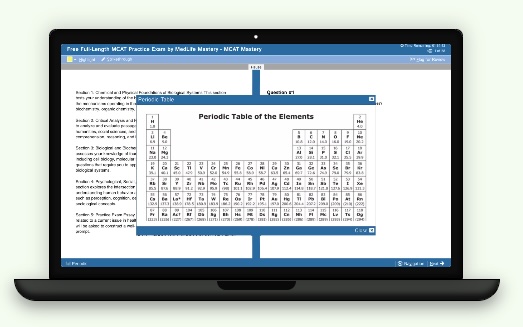pH and pOH are measures of acidity and alkalinity in solutions. They are essential concepts in chemistry, affecting everything from biological systems to industrial processes. Let’s dive into these concepts and understand their significance.
I. Introduction to pH and pOH
The terms pH and pOH refer to hydrogen ions (H⁺) and hydroxide ions (OH⁻) concentrations in a solution, respectively. The pH scale ranges from 0 to 14, where:
The pOH scale is inversely related to pH:
These scales are logarithmic, meaning each unit change represents a tenfold change in ion concentration.
II. The Concept of pH
The pH of a solution is calculated using the formula:
pH = – log[H+]
Here H+, represents the concentration of hydrogen ions in moles per liter (M). A lower pH indicates a higher concentration of hydrogen ions, making the solution more acidic.
Example: Calculating pH
if the hydrogen ion concentration of a solution is 1 x 10-3 M, the pH is:
pH = – log[1 x 10-3] = 3
Understanding pH is crucial in titrations. The pH change indicates the endpoint, which helps determine the concentration of an unknown solution.
III. The Concept of pOH
Similarly, pOH is calculated as:
pOH = – log[OH-]
Here OH-, represents the concentration of hydroxide ions. A lower pOH indicates a higher concentration of hydroxide ions, making the solution more basic.
Example: Calculating pOH
if the hydroxide ion concentration of a solution is 1 x 10-2 M, the pOH is:
pOH = – log[1 x 10-2] = 2
pOH values are important in understanding the properties of cleaning agents. Cleaning agents are typically basic and must be controlled for safety and effectiveness.
IV. Relationship Between pH and pOH
The relationship between pH and pOH in any aqueous solution is given by:
pH + pOH = 14
This equation helps us determine one value if the other is known. For instance, if the pH of a solution is 4, the pOH is:
pOH = 14 - pH = 14 - 4 = 0
Additional Concept:
The ion-product constant for water, Kw, 1 x 10-14 at 25oC. This constant underlies the pH and pOH relationship, it is crucial in understanding the autoionization of water.
V. Calculating Ion Concentrations
To find the ion concentration from pH or pOH, we use the inverse logarithmic function:
[H+] = 10-pH
[OH-] = 10-pOH
Example: Calculating H+ for a solution with pH 5:
[H+] = 10-5 M
Example: Calculating OH- for a solution with pOH 3:
[OH-] = 10-3 M
VI. Acid-Base Reactions and Neutralization
Acid-base reactions involve the transfer of protons (H⁺) between reactants. When an acid and a base react, they neutralize each other, forming water and salt. The general reaction is:
Acid + Base → Salt + Water
Example: Neutralization Reaction
HCl + NaOH → NaCl + H2O
Here, hydrochloric acid (HCl) reacts with sodium hydroxide (NaOH) to produce sodium chloride (NaCl) and water (H₂O).
VII. Buffer Solutions
Real-World Example: The bicarbonate buffer system maintains blood pH in the human body. Carbonic acid (H₂CO₃) and bicarbonate ions (HCO₃⁻) balance pH levels:
H+ + HCO3- ↔ H2CO3 ↔ H2O + CO2
VIII. Applications of pH and pOH
Understanding pH and pOH is vital in various fields:
IX. Bridge/Overlap
Understanding pH and pOH is essential in acid-base chemistry and plays a critical role in various other fields. Here’s how these concepts bridge across different areas of chemistry:
Acid-Base Equilibria
Understanding how weak acids and bases behave in solution is essential for predicting the outcome of chemical reactions and processes.
Electrochemistry
The role of ions in redox reactions and electrochemical cells is fundamental. This knowledge helps in understanding batteries and galvanic cells.
Environmental Chemistry
The impact of pH on natural water bodies and soil health is crucial for environmental conservation and pollution control.
X. Wrap-Up and Key Terms
Understanding pH and pOH involves mastering key concepts foundational to many chemistry areas. Knowing how to calculate and interpret pH and pOH is essential for various scientific applications. This knowledge is not only important for academic purposes but also for practical applications in everyday life.
Key Terms
XI. Practice Questions
Sample Practice Question 1
What is the pH of a solution with a hydrogen ion concentration of 1×10−4 M?
A. 2
B. 3
C. 4
D. 5Ans. C
The pH is calculated using the formula:
pH=−log[H+]For a hydrogen ion concentration of 1×10−4M:
pH=−log(1×10−4)=4
Sample Practice Question 2
If a solution has a pH of 8, what is the pOH?
A. 6
B. 7
C. 8
D. 10Ans. A
pH and pOH are related by the equation:
pH+pOH=14
If the pH is 8, then:
pOH=14−8=6







 To help you achieve your goal MCAT score, we take turns hosting these
To help you achieve your goal MCAT score, we take turns hosting these 





















 reviews on TrustPilot
reviews on TrustPilot